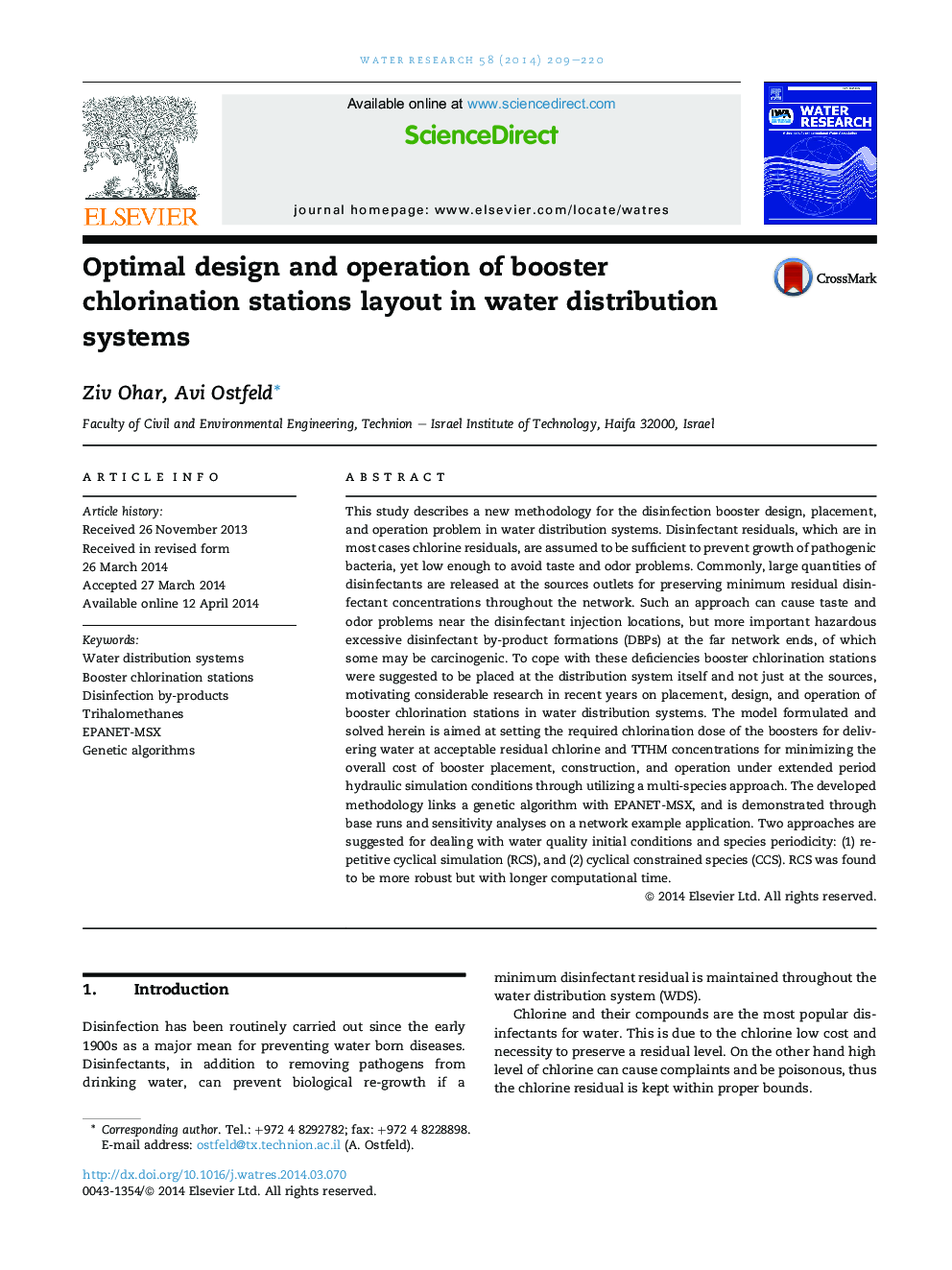| کد مقاله | کد نشریه | سال انتشار | مقاله انگلیسی | نسخه تمام متن |
|---|---|---|---|---|
| 4481575 | 1623110 | 2014 | 12 صفحه PDF | دانلود رایگان |
• Optimal layout, design, and operation of booster chlorination stations.
• Disinfectant by products constraints inclusion in booster chlorination design.
• Explicit incorporation of water quality initial concentrations consideration.
• A genetic algorithm multispecies water quality model framework.
This study describes a new methodology for the disinfection booster design, placement, and operation problem in water distribution systems. Disinfectant residuals, which are in most cases chlorine residuals, are assumed to be sufficient to prevent growth of pathogenic bacteria, yet low enough to avoid taste and odor problems. Commonly, large quantities of disinfectants are released at the sources outlets for preserving minimum residual disinfectant concentrations throughout the network. Such an approach can cause taste and odor problems near the disinfectant injection locations, but more important hazardous excessive disinfectant by-product formations (DBPs) at the far network ends, of which some may be carcinogenic. To cope with these deficiencies booster chlorination stations were suggested to be placed at the distribution system itself and not just at the sources, motivating considerable research in recent years on placement, design, and operation of booster chlorination stations in water distribution systems. The model formulated and solved herein is aimed at setting the required chlorination dose of the boosters for delivering water at acceptable residual chlorine and TTHM concentrations for minimizing the overall cost of booster placement, construction, and operation under extended period hydraulic simulation conditions through utilizing a multi-species approach. The developed methodology links a genetic algorithm with EPANET-MSX, and is demonstrated through base runs and sensitivity analyses on a network example application. Two approaches are suggested for dealing with water quality initial conditions and species periodicity: (1) repetitive cyclical simulation (RCS), and (2) cyclical constrained species (CCS). RCS was found to be more robust but with longer computational time.
Pumping units of Mekorot Israel National Water Company at the Israeli National Water Carrier at Eshkol reservoir (picture taken by Avi Ostfeld, June 2013).Figure optionsDownload high-quality image (279 K)Download as PowerPoint slide
Journal: Water Research - Volume 58, 1 July 2014, Pages 209–220
